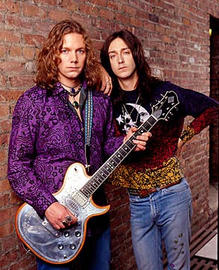I was surfing Globe of Blogs, which is something I remember to do about once a year, usually in the summer, when school is out and I have more time. There are a lot of blogs out there. Sometimes a description interested me, and I clicked the link, only to discover the blog was defunct.
Blogcount.com keeps track of blogging statistics, and some of them are fairly interesting. From March 14:
- The number of blogs Technorati tracks doubled every 5 months for the last 20 months. [Useful for planning server purchases, I bet.] If the trend continues (and we don’t know why it should), Technorati should be tracking 15 million blogs by August, 30 million by January.
- Technorati discovers 30-40 thousand blogs daily.
From February 5:
- There are 1 million active MovableType and TypePad users.
- When you combine all the [Six Apart] properties, including LiveJournal, there are 6.5 million registered and 3.5 million active users.
In “The Blogging Geyser,” Perseus reported in April that there were “31.6 million hosted blogs,” which they projected would grow to “53.4 million by year end.” In their own list of caveats, they admit that their survey “does not cover nonhosted blogs” (blogs that exist on their their own servers or domains — like this one). They concluded that LiveJournal, BlogSpot, and Xanga are the leading hosts, while they describe my former host, Diaryland, as a “niche player.” LiveJournal’s figures may be skewed high, because the data included syndicated feeds (this blog has a syndicated LJ feed: Much Madness Log; click to subscribe).
An often cited statistic says that the average blog only lasts six months. If that is true, even if you don’t count my years at a hosted service, I have managed to stand the test of time, as it were. In 2003, in “The Blogging Iceberg,” Perseus reported that there were 4.12 hosted blogs, 66%, or 2.72 million, of which had not been updated in more than two months. Further, 1.09 million blogs had only one entry or only lasted one day (there is a difference between the two, but Perseus did not distinguish). The average staying power of the hosted blog at that time was four months.
I wonder if it is even possible to conduct an accurate survey of the blogosphere. This is what I would like to know:
- How many blogs are out there?
- How many blogs are active, updated with some regularity?
- How long does the average blog really last?
- What do age demographics for bloggers look like?
Also, what about quality? This is even more intangible. I personally don’t like to read chatspeak, and I have issues with LiveJournal, which seems like a very closed community — it is not easy for non-LJ users to comment on LJ blogs (you have to declare yourself anonymous, and some users do not accept anonymous comments) or read locked or “friends only” blogs, for instance. Political blogs are arguably the most popular, but I don’t read any. Do you? Speaking of quality, the TTLB has an ecosystem ranking blogs in evolutionary terms. However, I find that the so-called A-list blogs are often just not that interesting. I have tried reading a few of them to see what the fuss was about, but I just didn’t stay. By the way, I harbor no illusions that this blog is interesting or even mildly entertaining, but I decided long ago that the number of visitors didn’t matter to me, or else I’d write about things that would bring more traffic. Actually, I am sometimes jarred by new readers — not that I don’t welcome you, if you’re new. My first thought is usually why are you here?
So before I went off on a tangent about my own insignificance in the blogosphere, I was wondering about good blogs. How many really good blogs are out there? Do you know of one you think I’d like?
And while I’m asking you questions, dear reader, what is your take on all of this?
Benjamin Disraeli said, “There are three kinds of lies: lies, damned lies, and statistics.”



